A malfunctioning garbage disposal can quickly disrupt your kitchen routine and create unsanitary conditions. Before calling a professional, many common disposal issues can be diagnosed and fixed with simple tools and basic knowledge. This guide covers the most frequent problems and their solutions, along with preventative maintenance tips to extend your unit’s lifespan.
Common Garbage Disposal Problems and Solutions
1. Disposal Won’t Turn On
If your disposal doesn’t make any sound when activated, the issue is likely electrical.
Troubleshooting Steps:
- Check the power: Ensure the unit is plugged in securely.
- Reset button: Locate and press the red reset button on the bottom of the disposal unit (turn off the power switch first).
- Circuit breaker: Check if the dedicated circuit breaker has tripped and reset it if necessary.
- Test the switch: Test the wall switch with a voltage tester to confirm it’s working properly.
- Check wiring connections: If comfortable doing so, verify the wiring connections (with power off).
Quick Fix:
Most non-responsive disposals can be fixed by pressing the reset button:
- Turn off the disposal switch.
- Look underneath the disposal for a small red button.
- Press it firmly until it clicks.
- Turn the switch back on to test.
2. Disposal Hums But Doesn’t Grind
A humming disposal indicates the motor is receiving power but the grinding mechanism is jammed.
Troubleshooting Steps:
- Cut power immediately: A humming disposal that isn’t spinning can overheat and damage the motor.
- Check for obstructions: Something hard may be jamming the blades.
- Use the hex wrench: Insert the Allen wrench that came with your disposal (or a 1/4-inch Allen wrench) into the hole at the bottom of the disposal and rotate it back and forth to free the impeller plate.
- Manual rotation: After freeing it with the wrench, try rotating the plate manually to ensure free movement.
Quick Fix:
- Turn off power to the disposal at the switch and circuit breaker.
- Use a flashlight to inspect for visible obstructions.
- Use tongs or pliers (never your hands) to remove any visible objects.
- Insert the hex wrench in the bottom hole and rotate clockwise and counterclockwise until the jam clears.
- Restore power and test.
3. Disposal Leaking
Leaks commonly occur at connection points and generally fall into three categories.
Top Leak (Sink Flange):
- Verify the mounting bolts are tight.
- Check if the plumber’s putty around the flange has degraded.
- Reinstall the flange with fresh plumber’s putty if necessary.
Side Leak (Dishwasher Connection or Discharge Pipe):
- Tighten the connection between the disposal and dishwasher hose.
- Check the discharge pipe connection and tighten or replace the gasket.
- Inspect for cracks in the disposal housing (requires unit replacement).
Bottom Leak (Internal Seal):
- Leaks from the bottom typically indicate internal seal failure.
- Unfortunately, this usually requires replacement of the entire unit.
4. Disposal Drains Slowly
Slow drainage indicates a clog in the disposal or the plumbing beyond it.
Troubleshooting Steps:
- Check the disposal: Run water and turn on the disposal to clear minor blockages.
- Inspect the P-trap: Clear any clogs in the curved pipe beneath the disposal.
- Avoid chemical drain cleaners: These can damage disposal components and pipes.
Quick Fix:
- Turn off the disposal.
- Pour 1/2 cup baking soda followed by 1/2 cup vinegar into the drain.
- Wait 15 minutes.
- Flush with hot water while running the disposal.
- If still clogged, use a plunger specifically for the sink (not one used for toilets).
5. Strange Noises During Operation
Different sounds can help diagnose specific problems.
Rattling or Clanking:
- Metal or hard objects are likely trapped in the disposal chamber.
- Turn off and unplug the unit, then remove the object with tongs.
Grinding or Screeching:
- Small bones or hard food may be grinding through (normal).
- Persistent grinding may indicate worn bearings or impeller components.
Buzzing Without Movement:
- This indicates a jammed flywheel (follow jam-clearing steps above).
Preventative Maintenance Tips
Daily Practices:
- Cold water use: Always run cold water before, during, and after disposal use (at least 15 seconds after).
- Proper food items: Avoid fibrous, starchy, or greasy foods that cause clogs.
- Small portions: Feed items gradually rather than all at once.
- Regular flushing: Run the disposal with cold water daily, even if not used.
Monthly Maintenance:
- Natural cleaning: Freeze vinegar in ice cube trays and grind these cubes to clean and sharpen blades.
- Citrus freshener: Grind lemon or orange peels to eliminate odors and clean grease.
- Inspect connections: Check for early signs of leaks or loose fittings.
What Never to Put in a Garbage Disposal:
- Grease or oils (solidify in pipes)
- Pasta, rice, or bread (expand with water)
- Coffee grounds (create sediment)
- Eggshells (membrane can wrap around blades)
- Fibrous vegetables (celery, corn husks, onion skins)
- Non-food items (paper, plastic, metal)
- Bones (except very small fish or chicken bones)
- Fruit pits or seeds
When to Call a Professional
While many disposal issues can be resolved with DIY methods, consider professional help when:
- Water is leaking from the disposal body itself
- The motor burnout prevents reset
- You’ve cleared jams but the unit still won’t operate
- The disposal is more than 10 years old (average lifespan)
- You notice frequent recurring problems
- Unusual burning smells occur during operation
Conclusion
A well-maintained garbage disposal can provide years of trouble-free service. Regular maintenance and proper use are the keys to avoiding most common problems. When issues do arise, this troubleshooting guide should help you diagnose and fix many problems safely. For persistent issues or if you’re uncomfortable performing these fixes yourself, contact MySuperHub for professional garbage disposal repair or replacement services.
A properly functioning garbage disposal is the unsung hero of a clean kitchen—until it stops working.
James Thompson
Residential Plumbing Technician

